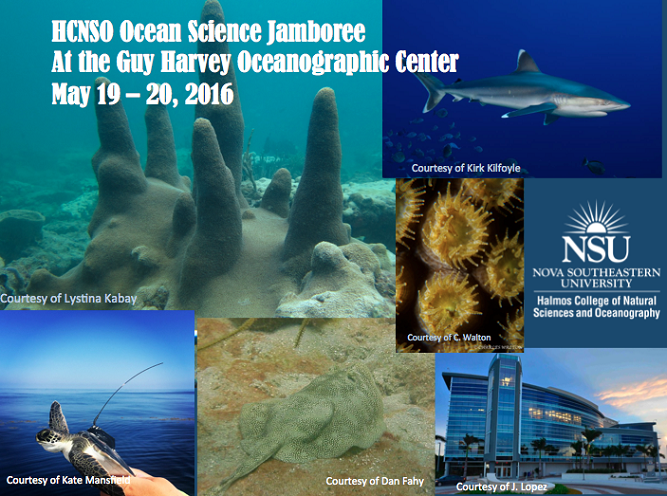Flow Cytometric Characterization of Marine Invertebrate Genome Size Diversity
Location
Guy Harvey Oceanographic Center Facility
Start
5-20-2016 2:00 PM
End
5-20-2016 2:15 PM
Abstract
Invertebrates represent the vast majority of faunal diversity on the planet and to a greater extent, the marine environment, but most remain inaccessible and understudied. The burgeoning field of genomics can provide a substantial information on the biology of understudied invertebrate taxa. Genome size analysis can help reevaluate evolutionary relationships, provide basic information on genomes, and resolve phylogenetic discrepancies that may be controversial. Moreover, genome size estimates will soon be a necessary co-requisite for high throughput DNA sequencing projects, such as the Global Invertebrate Genome Alliance (GIGA-cos.org). Genome sequences illuminate adaptations, such as how marine organisms transitioned to new environments. Technically, genome size estimates can help avoid unnecessary, expensive sequencing of genomes too large for current methods (> 3 gigabase pairs). Flow cytometry (FCM) is a widely used, reliable, and accurate means of estimating genome sizes and is expected to yield valid measurements in this broad taxonomic study of at least 30 new species (N>5 phyla). FCM will quantify genome size by measuring the fluorescent re-emission from nuclei that have been saturated with DNA-binding dyes, such as propidium iodide (PI). Genome sizes of unknown species will be quantified by comparing to known genome sizes of “standard” species (e.g. brine shrimp and human). This project has the following major goals: (1) determine genome sizes of previously unknown marine invertebrates through the use of a standard FCM, (2) adapt FCM preparation methods to the specific taxa studied, (3) provide genomics collaborators with potential cost-effective candidates for sequencing, (4) develop hypotheses on how genome sizes are related to the ecology and evolution of each species (5) provide genomics researchers with optimized tissue preservation protocols. This study will provide a major contribution to help advance invertebrate genomics studies, the GIGA community of scientists, and also provide a platform for future international collaborations.
Flow Cytometric Characterization of Marine Invertebrate Genome Size Diversity
Guy Harvey Oceanographic Center Facility
Invertebrates represent the vast majority of faunal diversity on the planet and to a greater extent, the marine environment, but most remain inaccessible and understudied. The burgeoning field of genomics can provide a substantial information on the biology of understudied invertebrate taxa. Genome size analysis can help reevaluate evolutionary relationships, provide basic information on genomes, and resolve phylogenetic discrepancies that may be controversial. Moreover, genome size estimates will soon be a necessary co-requisite for high throughput DNA sequencing projects, such as the Global Invertebrate Genome Alliance (GIGA-cos.org). Genome sequences illuminate adaptations, such as how marine organisms transitioned to new environments. Technically, genome size estimates can help avoid unnecessary, expensive sequencing of genomes too large for current methods (> 3 gigabase pairs). Flow cytometry (FCM) is a widely used, reliable, and accurate means of estimating genome sizes and is expected to yield valid measurements in this broad taxonomic study of at least 30 new species (N>5 phyla). FCM will quantify genome size by measuring the fluorescent re-emission from nuclei that have been saturated with DNA-binding dyes, such as propidium iodide (PI). Genome sizes of unknown species will be quantified by comparing to known genome sizes of “standard” species (e.g. brine shrimp and human). This project has the following major goals: (1) determine genome sizes of previously unknown marine invertebrates through the use of a standard FCM, (2) adapt FCM preparation methods to the specific taxa studied, (3) provide genomics collaborators with potential cost-effective candidates for sequencing, (4) develop hypotheses on how genome sizes are related to the ecology and evolution of each species (5) provide genomics researchers with optimized tissue preservation protocols. This study will provide a major contribution to help advance invertebrate genomics studies, the GIGA community of scientists, and also provide a platform for future international collaborations.


